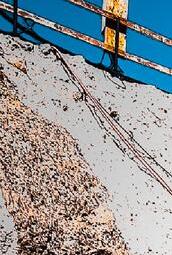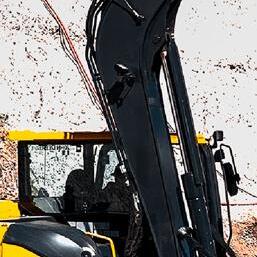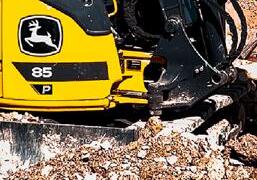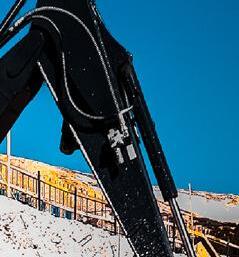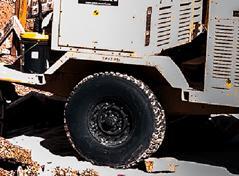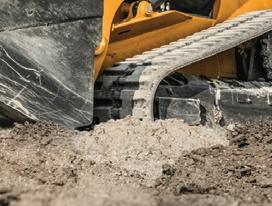








Site prep is well under way for a hangar development project at Spanish Fork Airport.
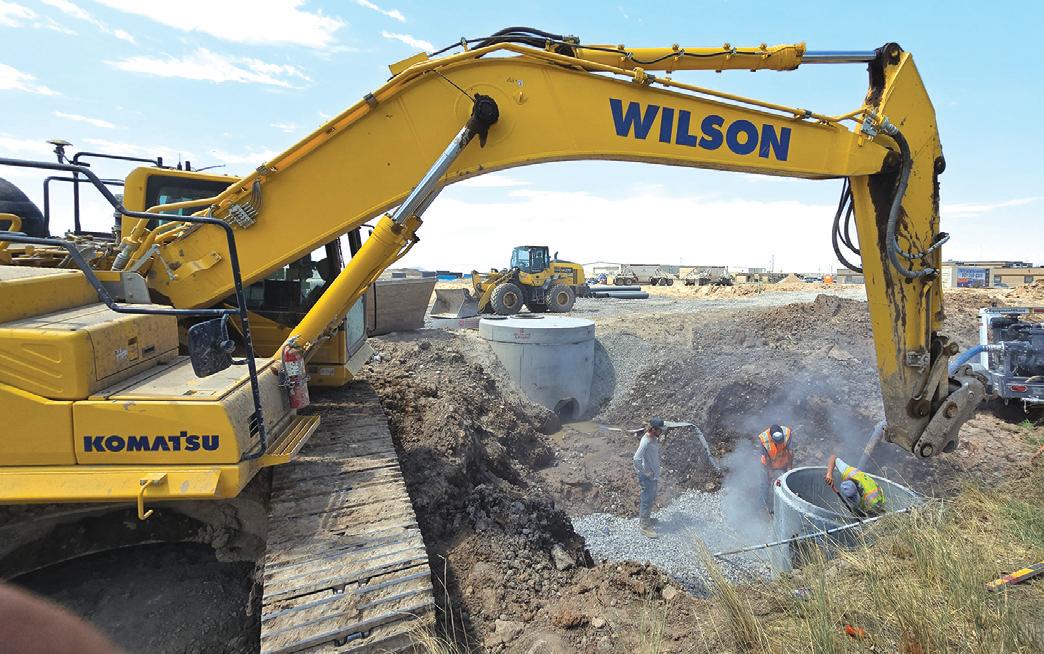
By Cindy Riley CEG CORRESPONDENT
Construction has begun in Utah on a $48 million hangar development project at Spanish Fork Airport. The effort is the latest partnership between the facility and Utah Aviation.
“Spanish Fork Airport has a need for growth, as the Utah County area continues to grow,” Utah Aviation Project Manager Devan Cahoon said. “This expansion will allow for more planes on the airfield and give more opportunities for travel in and out of Spanish Fork. The project also will beautify Main Street, where the airport sits.
“We are bringing in Flight Academy as one of the main tenants. They will be operating their flight school, as well as bringing plane manufacturing to the airport, which will provide many employment opportunities.”
Cruiser Aircraft USA also will serve as an anchor tenant.
The official name of the completed effort will be Utah Aviation Business Park, with this portion to be known as Main Street Flight Center.
A groundbreaking ceremony to recognize the project took place in May.
“We had huge support from city employees, contractors and all our subs,” Cahoon said. “Spanish Fork City
Although it is difficult to predict the future, Salt Lake City Mayor Erin Mendenhall and other city leaders are confident that the city and its downtown will look completely different by the time the Winter Olympics and Paralympics return to Utah in 2034.
“Salt Lake City is not going to look the same in 10 years,” the mayor said earlier this summer after Salt Lake City locked down its bid to host the global event.
That transformation, she added, was coming regardless of the Olympics and it is already under way, reported
KSL.com, the website for KSL-TV. Over the past year or two, the city and other entities have unveiled multiple largescale projects that will radically transform the Utah capital,

especially its downtown core.
With the bid now secure, these projects could become a reality by 2034 because the Olympics is expected to unlock a wave of new federal funds, much like the 2002 Winter Games did before Salt Lake City hosted that event.
City Councilman Alejandro Puy, who joined his colleagues at a viewing party to watch the Olympic announcement from Paris on July 24, told KSL.com that Salt Lake City is compiling a “big laundry list of needs” that could be addressed.
“It’s a huge deal. Hopefully, it’ll make an impact, after the Games are done, for decades,” he said. “Many of the older [residents] who participated in the [2002] Olympics saw Utah change because of the Olympics, so I think the bar is high, and we cannot disappoint.”
Salt Lake City has already been transformed since it hosted the 2002 games. Its population is now about 210,000 — its highest count ever with nearly 30,000 more residents than the city had 22 years ago, according to KSL.com.
And that is not the only difference. Once a mix of residents and businesses before the suburban flight of the 1960s, office workers were the biggest driver of downtown visitation during the 2002 Winter Olympics. This remained the case until the pandemic, which transformed everything.
The social economy — people coming to bars, restaurants or other activities — took over. While new office spaces have opened up since the pandemic, this trend, too, has not changed, and it is a big reason developers are building residential highrises and converting old office towers into housing.
Salt Lake City’s downtown’s residential transformation is already under way.
35,000, a 34 percent increase. However, these could be conservative estimates.
“Frankly, it may be too modest,” said Dee Brewer, executive director of the Downtown Alliance, who added that he knows of multiple private developers who are now considering "very ambitious” residential towers that would reshape the skyline yet again.
On top of that, he explained to KSL.com that the University of Utah has expressed interest in building new student housing, programs and colleges downtown. Smith Entertainment Group (SEG) also is eyeing residential towers within its major downtown revitalization project, and that could change the numbers as well.
Salt Lake City recently approved zoning changes that removed most downtown building height limits, while SEG’s proposed plan could open the door for building height caps of 600 ft. Many recent projects have centered on multifamily housing to bring families back downtown. Together, these factors would drastically alter what type of population exists in 10 years.
town Salt Lake City is the biggest thing that we can be working on right now,” he told KSL.com.
SEG’s plan to remodel the Delta Center and build an entertainment district around it has garnered the most attention this summer as Utah welcomes in a National Hockey League (NHL) franchise, but it’s far from the only project that would drastically change downtown.
Lake City’s formed a plan to transform 11 acres near the Rio Grande Depot, anchored by USA Climbing’s proposed new headquarters. The project is designed to extend the downtown footprint to the west.
• Rio Grande Plan, a resident-led effort would bury the rails that run just west of downtown through a train box. The Utah Transit Authority’s (UTA) FrontRunner commuter line potentially could use the Rio Grande Depot as a station. Salt Lake City published a screening analysis late last year and estimated that it could cost $3-5 billion to develop.
Of all the proposed projects for Salt Lake City ahead of the Olympics, the SEG proposal to revitalize downtown has the most attached funding.
“Increasing building height means that we can achieve density,” Brewer explained. “You may look at that positively or negatively, but there are good things that come out of strengthening downtown with more people living here.”
Since no new venues are needed for Salt Lake City to pull off the 2034 games, Gov. Spencer Cox said Utah has a unique opportunity.
Among the larger projects, the Worthington, a 31-story apartment high-rise, began welcoming tenants in June, and Astra Tower, the state’s tallest building, is slated to open in September.
The downtown’s population is projected to double from approximately 4,900 in 2022 to 10,000 in 2025, the University of Utah’s Kem C. Gardner Policy Institute estimated last year.
That number is expected to reach 14,000 by 2034, nearly triple its 2022 population, according to new Salt Lake City Downtown Alliance projections. Additionally, the city’s central business district will likely see the population of downtown workers reach
That type of growth calls for many new amenities, including more infrastructure and green space. They highlight many of the large-scale projects that the city is trying to accomplish ahead of the Winter Olympics but are also the types of projects that Mendenhall said Salt Lake City would push even if it had lost out on the bid.
Since no new venues are needed for Salt Lake City to pull off the 2034 games, Gov. Spencer Cox said Utah has a unique opportunity to dream of several large-scale projects to improve the state.
“I believe the transformation of down-
• The Downtown Revitalization District is a collaboration between Salt Lake City and SEG, with a remodeled Delta Center for the NBA’s Utah Jazz and the new NHL team. The plan could include a new entertainment district east of the arena with new buildings and a plaza over 300 West that could be tunneled underground. A clause within the agreement between the city and SEG notes that all Smith projects supported by possible public funds must be complete by 2034. The massive construction effort may include a rebuilt Utah Museum of Contemporary Art and a renovated Abravanel Hall. SEG said it will direct $3 billion in private funds to the project, but it can also get up to $900 million in bonds.
• The Redevelopment Agency of Salt Lake City is working on a 20year plan that highlights future changes to the downtown’s Gallivan Plaza.
• In 2023, the city unveiled its plans and later concept designs for a “green loop” of trails and park space surrounding the downtown.
• Salt Lake City introduced concept designs earlier this year on how to turn Main Street into a walkable promenade with various districts on each block from 400 South to South Temple, a project estimated to cost $125 million.
• The downtown’s Pioneer Park could be revamped. So far, the city directed $3.4 million in impact fee funds in 2019 and $10 million from a sales tax bond in 2022 toward the project; however, it is unclear when construction will begin.
• The Redevelopment Agency of Salt
• UTA wants to move forward with its proposed light-rail extension that would link the University of Utah’s Research Park to Salt Lake City International Airport via a new line deeper into the core of downtown. Jay Fox, the transit authority’s director, told KSL.com in July that he would like to see the new orange TRAX line finished and operational by 2034.
Of all the proposed projects for Salt Lake City ahead of the Olympics, the SEG proposal to revitalize downtown has the most attached funding, as the tentative deal, if finalized, would allow for up to $900 million in bonds that could be repaid through a 0.5 percent sales tax revenue collection over the next 30 years.
Unlocking federal funds also would offer the city and state an opportunity to complete many of the other projects by 2034, noted KSL.com. Both City Councilman Puy and Gov. Cox said requests would pick up once the bid was completed.
Brewer said he believes the strongest cases may be the proposals for the city’s parks, the Green Loop, and the transportation efforts, such as the downtown TRAX expansion or the Main Street Promenade, the latter of which is because Main Street’s aging sewer infrastructure needs to be replaced anyway.
Should it all come together, people arriving for the 2034 Olympics may find a downtown that has grown taller with more pedestrian plazas, transit and green space than today. Additionally, they could see more people living downtown and more businesses and buildings tailored to community needs, including restaurants, stores, and possibly a school.
If that is the case, Brewer said he hopes existing businesses are given an opportunity to grow.
“We were already on that trajectory,” he said. “[We need to make] sure that these investments are made from a holistic perspective that lifts up the entire downtown area.”
The Colorado Department of Transportation (CDOT) began a $46 million effort in late July to build a more efficient intersection in Colorado Springs at the junction of Colorado Highway 21/South Powers Boulevard and Airport Road, the state agency announced.
Though work began at the interchange in June, a ceremonial groundbreaking was held on July 25 at the site with many local and state elected leaders, as well as CDOT officials, in attendance.
The state transportation agency said the work is designed to be a major makeover for the intersection.
Over the next two years, Powers and Airport will be transformed from a typical four-way intersection into a diverging diamond interchange (DDI), similar to the ones that have been built at nearby West Fillmore Street and Interstate 25, and the junction of Research Parkway and Powers Boulevard.
A DDI directs traffic to the opposite side of the road across an interchange so that vehicles have unimpeded movement onto ramps. As a result, left-turn movements which are a challenge with standard fourway interchanges are eliminated, reducing delays, conflict points and wrong-way entry to ramps.
The Powers Boulevard/Airport Road DDI is the third such interchange in the Pikes Peak region, according to CDOT.
Plans call for bridge and ramp construction, embankment placement, concrete paving, overhead sign structure installation, new traffic signal systems and permanent water quality ponds to be built as part of the new DDI.
“With more than 50,000 vehicles traveling Powers Boulevard each day here at Airport Road, along with the Powers Corridor planning project, the need for an interchange at this location was indicated and was added to our 10-year priority project list,” CDOT Region 2 Transportation Director Shane Ferguson said. “This diverging diamond interchange will address congestion, improve safety and add multimodal facilities that will allow for a safer and more comfortable travel experience for cars, pedestrians and cyclists.”
The building site is just west of both Peterson Space Force Base and Colorado Springs Airport.
In speaking with KKTV in Colorado Springs, Ferguson told the station that he was confident the intersection makeover will significantly improve traffic flow at the notoriously busy corridor.
“As you have more traffic, you have more need for a larger number of cars going through the same area, so we’re trying to stay on top of the Powers corridor,” he added. “[The goal is to] keep traffic flowing
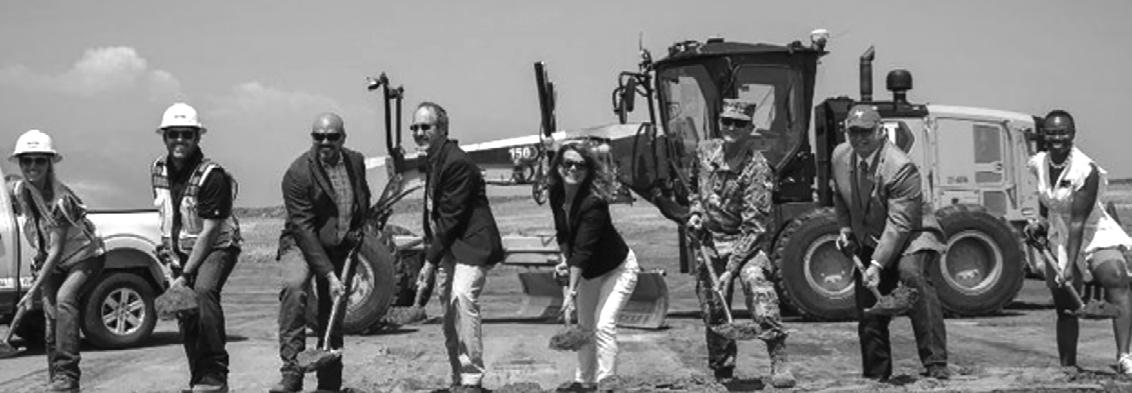
(L-R): WW Clyde Project Manager Brooke Miller, WW Clyde Area Manager Cameron Thompson, CDOT Region
Director Shane Ferguson, Federal Highway Administration Area Director John Cater, District 9 Colorado Transportation Commissioner Hannah Parsons, Peterson Space Force Base Delta 1 Commander Colonel Ken Klock, Colorado Springs City Council President Randy Helm and Colorado State Representative Regina English break ground on the Colorado Highway 21 Powers Boulevard and Airport Road Diverging Diamond Interchange Project.
into Peterson and keep people flowing on Airport.”
W.W. Clyde Construction, headquartered in Orem, Utah, is the prime contractor for the Colorado Springs road project.
“In 2019, CDOT embarked on an ambitious effort to set transportation plans and priorities — the 10-Year Strategic Plan — and that plan was adopted in 2020 and updated annually,” said Hannah Parsons, the commissioner of CDOT’s District 9.
“Constructing the Powers Boulevard and Airport Road interchange is an important part of this plan.”
The transportation agency said it was cognizant of how many people in the region use the intersection each day.
“The new interchange will be built north of the existing signalized intersection without disturbing current traffic patterns during most of the construction,” Ferguson said.
“This is one of the region’s busiest intersections and keeping traffic moving outside of Peterson Space Force Base is essential.”
CDOT’s Colorado Highway 21/Powers Boulevard and Airport Road online project page notes that the new construction will benefit the public by:
• Enhancing safety and mobility for drivers.
• Improving traffic flow and visibility.
• Providing a smoother driving surface.
• Increasing the longevity of the highway.
• Improving pedestrian crossing safety with easier access to medians.
“Projects like this support the economy and economic development and they improve peoples’ lives by allowing them to get where they want to go safely and efficiently,” added John Cater, Colorado Division director of the Federal Highway
Administration.
Also on hand for the project’s groundbreaking was Colorado Springs City Council President Randy Helms, who said, “What a great day to gather and celebrate the start of a project linking drivers to a major east-west corridor and connecting Peterson Space Force Base to the great city of Colorado Springs.”

The new DDI at Powers Boulevard and Airport Road is expected to be completed in late 2026, CDOT noted.
















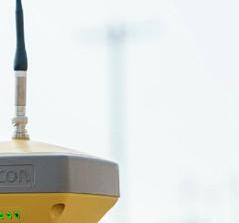








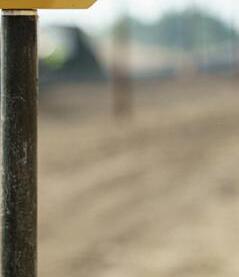


Mayor Mike Mendenhall spoke, as well as Brandon Wilson and Steve Wilson, the owners of Utah Aviation. We had more than100 people come out.
“Steve Wilson has worked on the airfield for 18 years and is a major part of this project coming about,” Cahoon continued. “He has worked with the airport in building more than 40 hangars prior to this project and has more than 25 years of experience developing commercial space throughout Utah.”
Cahoon said positioning the new development on Main Street is significant.
“These hangars are one-of-a-kind, and a
huge opportunity for Utah Aviation and all the involved contractors to work on historic Spanish Fork Main Street. This is a huge step for Spanish Fork City and Spanish Fork Airport to work together to complete and beautify Spanish Fork Main Street in a way that complements both the city and airport.”
In the previous six years, Utah Aviation has invested tens of millions of dollars to build 51 hangars at the airport. Completed hangars have ranged from 3,600 to 21,000 sq. ft.
The current project will feature more than two dozen hangars, ranging from $800,000 to $5 million, at 4,900 to 54,000 sq. ft. They will accommodate various aircraft types and
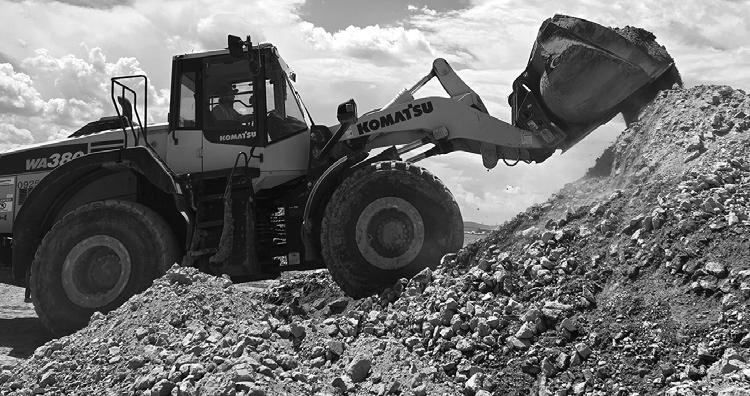
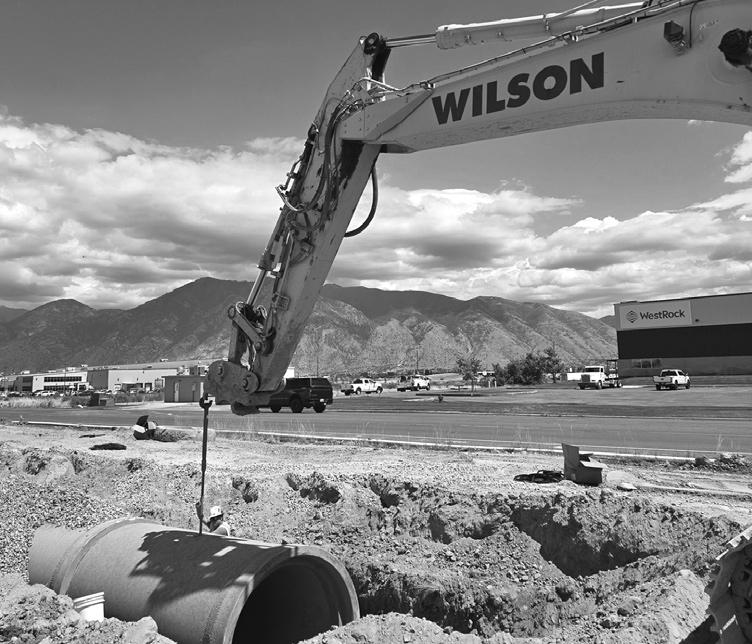
uses.
“The owners of the hangars have the option to do many types of tenant improvements,” Cahoon said. “Kitchens, temporary living quarters, event venue spaces and many other options exist for those who want to use their hangar for more than just storing planes.
“Flight Academy is a great example of different types of uses for these hangars. They’ll be doing flight schools, manufacturing, maintenance and classroom space for the needs of their business. Others will be storing their private places used for business and recreational purposes. We have all types of hangar owners eager to get into their new spaces.”
Cahoon said bringing businesses to Spanish Fork is vital to the area.
“We live in Spanish Fork, so we are heavily invested in the strength and growth of the community. It continues to grow along with the rest of Utah County. We love working
with city of Spanish Fork leaders because we know we can provide the best possible outcome on any project. They understand our needs and expectations, and they continue to bring business after business to the community, providing countless jobs and growth opportunities.”
The hangar development got under way in July 2024. Barco Construction serves as the contractor.
“Barco Construction is well known in the community and the state,” Cahoon said. “They have extensive experience erecting and completing hangars and metal structures.
“Wilson Excavation will be performing all the dirt work and ground prep. They are very well equipped and have done many projects in Spanish Fork and across Utah. From Hobby Lobby and Texas Roadhouse to large road projects and city utility installations, they can do it all and are already going
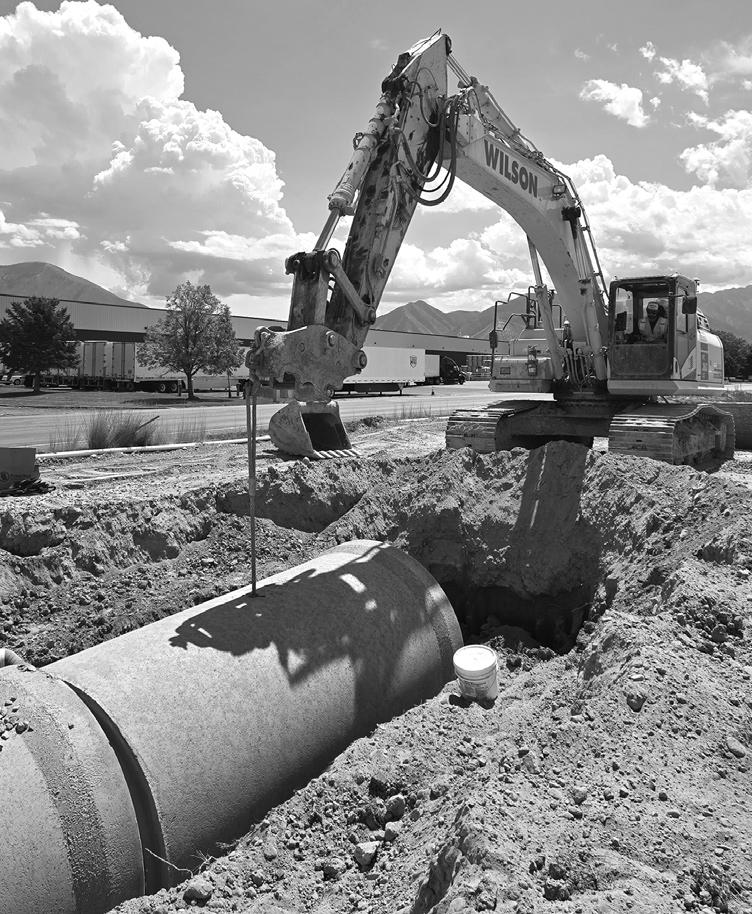

HANGAR from page 6
guns blazing.”
According to Cahoon, the main concern for workers right now is water.
“They are currently installing the main sewer line that runs along Main Street, and there’s a canal that workers had to reroute water from as they move south along the road. This has slowed things a bit, but steady progress has been made, even with the water challenges.”
Crews also are focused on grading the first 500 ft. on the west side of Main Street. This is where the largest hangars will be erected. Once this portion is completed, Barco will begin the prep process on the hangars further west.
Before the project started, the ground was mostly sagebrush and gravel. Only minor demolition was needed.
In addition, because of Utah’s weather patterns, Cahoon said workers have been mindful of the forecast.
“It’s a race to pave before Oct. 15. We will push as hard as we can to get as far as we can on the project. Depending on the progress



made, wintertime will most likely be spent putting up the building we are able to get the foundations in for.”
Equipment on site includes several large backhoes; several front-end loaders; a dozer; water trucks; and smaller machinery such as mini-excavators and skid steers.
“During this phase of the project, we’ve needed several hundred yards of gravel, which has been installed around the huge concrete sewer pipes. The pipes are 6 ft. tall on the inside and require large equipment and careful operators to install correctly and safely.”
Cahoon said working on the project is a tremendous honor for the Utah Aviation team.
“Spanish Fork Main Street is a heavily used roadway. For us to be a part of completing and beautifying this section is an honor we don’t take lightly. This has been a vision of Steve Wilson’s for many years, and for us to be able to bring it to life in such an amazing partnership with the airport is a dream come true.” CEG
(All photos courtesy of Utah Aviation.)











